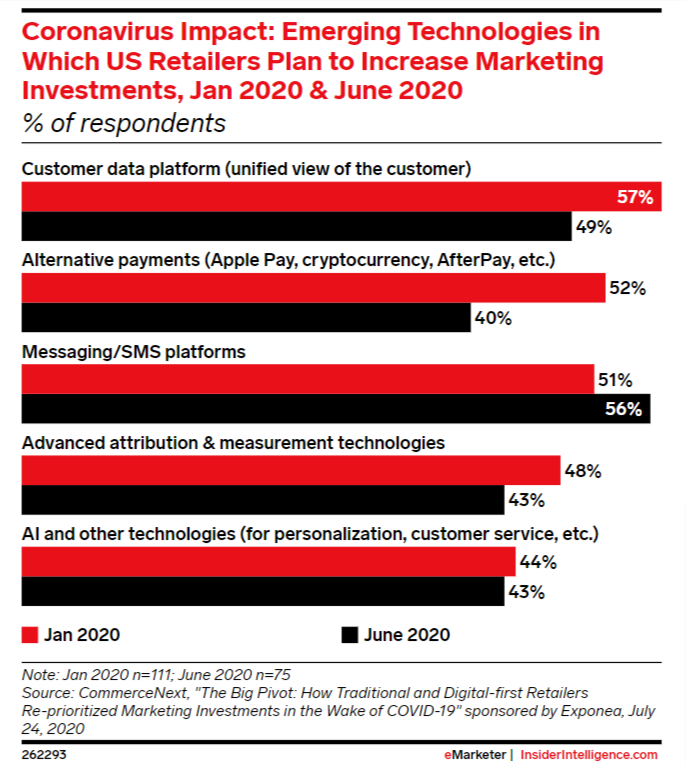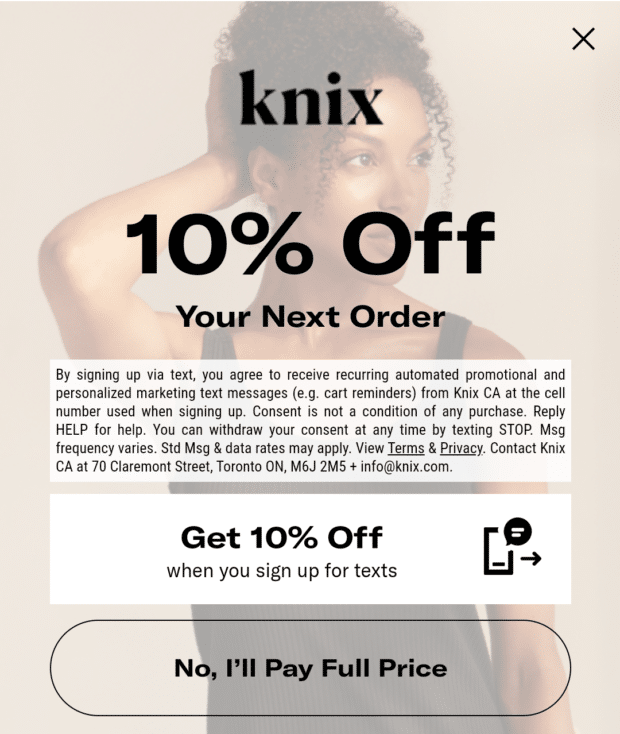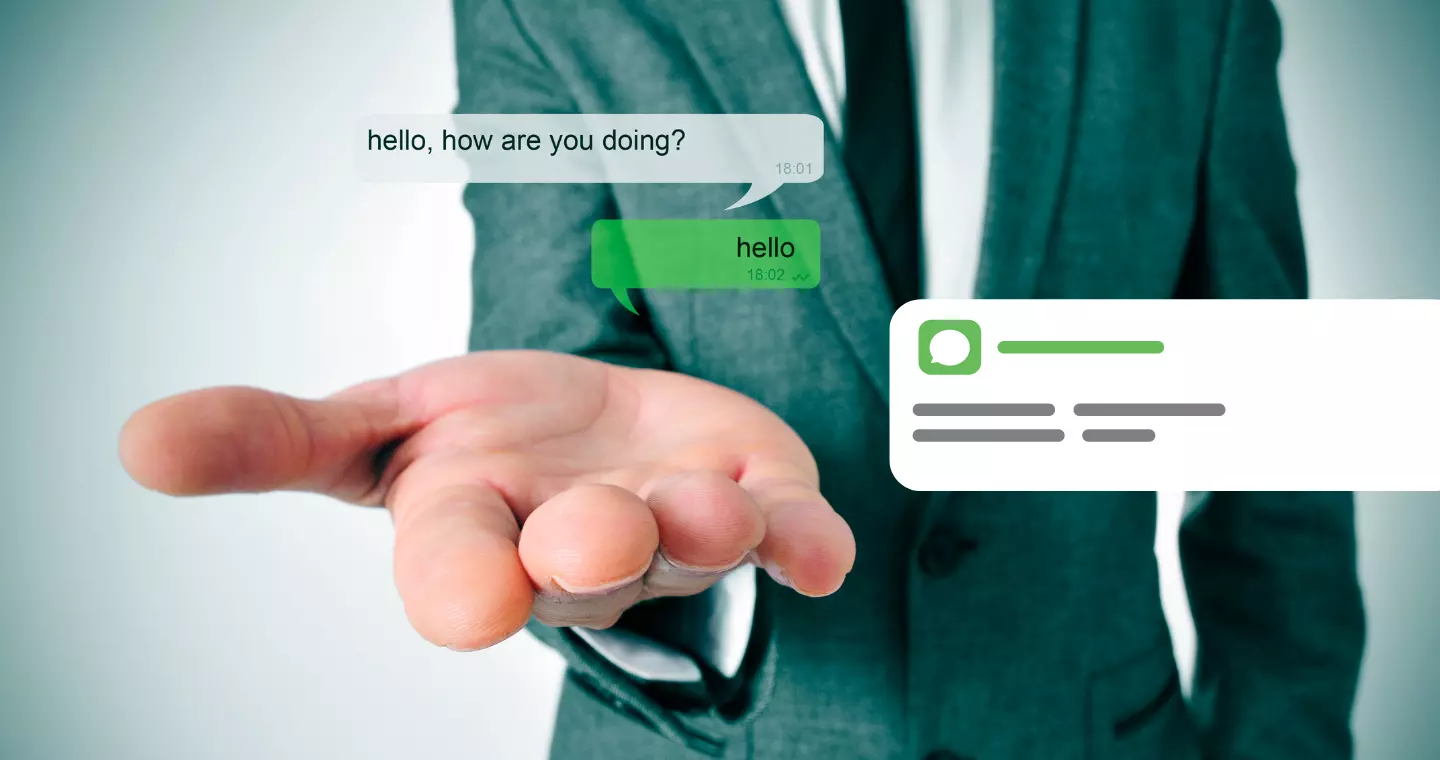Popular Tools by VOCSO
SMS messaging is one of the most communicative marketing techniques a business can introduce. If you’re dropping your latest product or simply following up on a basket abandonment, text messaging could be the quickest way to reach your consumers in 2023.
SMS marketing targets each customer one on one. Differing from many one to all approaches like social media marketing and site content, texting your customer could encourage those response rates you’ve been looking for.
Stick with us as we delve into the future of SMS campaigning, and teach you how to create a texting strategy that starts a conversation.
Table of Contents
What is SMS marketing?
According to Hubspot, “SMS marketing is a form of opt-in marketing that requires contacts to subscribe. This differentiates it from social marketing, where the marketer posts public content that people can choose to like or follow.”
By sending marketing messages via text, a business can target consumers with personalised campaigns, discounts, product offers, remarketing techniques, and even feedback surveys. Using an SMS strategy, marketers can quickly learn about their individual consumer groups and work out the types of messaging that interest them.
As a digitally native generation, we are becoming more comfortable with our smartphones. So it’s no surprise that a whopping 90% of text messages are opened within 3 minutes of sending. This beats the opening rate of email by 75% and proves more effective than posting a social story offering discounts and promotions.
“Because text messages appear on people’s mobile phones, they feel more personal than other kinds of marketing,” says CRO at EZ Texting, Luke Wilson. “Texting allows businesses to do many of the things that traditional media does without having to invest in extra hardware, labor, printing, or media buys.”
So it’s no wonder that on the back of Covid-19’s digital shift, we’ve seen more investment pour into SMS strategies, especially among startups and SMEs.

In fact, by June 2020, SMS platforms saw more investment from marketers than any other form of campaigning strategy. If that doesn’t convince you to jump on board, we don’t know what will.
Why choose SMS?
If you’re still unsure about introducing SMS to your marketing strategy, let’s have a closer look at some of the key benefits of this targeting method:
- Building loyalty: SMS marketing comes hand in hand with personalisation. Sending customised messages, offers, and loyalty programs to your repeat buyers will keep them coming back to your site and make them feel valued and listened to as a customer.
- ROI boost: if you want to drive traffic to your online store, SMS messaging is the way to go. With such a positive open rate, your targets will be more likely to follow through on a discount code or a retargeting attempt.
- Enhancing other marketing efforts: Last but not least, your SMS strategy can also complement your other targeting efforts, such as your social campaigns or site product launch. Using SMS texting to share a link to your newest social post or even remind customers about an upcoming campaign can be the push they need to click the link and engage.
How to create a successful SMS strategy in 2023
If you’re ready to introduce SMS messaging to your next campaign, there are a few easy steps you can take to ensure success. From keeping content to the point to making sure that all important opt-out links are visible, here are some strategy must-haves to include.
1. Keep your messages short and sweet
SMS messaging typically has a character limit of 160 characters, meaning that if you want to get your point across to your consumers, you need to be cutting out the fluff and slipping in that CTA immediately.
If you’re continuously writing lengthy messages, your targets will quickly tire and may opt out of receiving your texts in the future.
The key here is to catch their attention from the get-go. Start your message with a powerful CTA statement, such as ‘Shop now for 20% off all winter coats’. In the first line, the consumer has learned about the discount offered and has been told what to do to receive it. Following statements like this with a hyperlink is a great way to quickly drive traffic to your site.
2. Make sure a consumer can opt in or out
More than 75% of consumers are happy to receive SMS messaging as long as they are given the option to opt-in.
So, when starting an SMS campaign, the opt-in/out options must be displayed clearly on the site when a user signs up to receive promotional content from you.
While it may seem more effective to send SMS messages to every previous conversion, it’s important to ask for a consumer’s preferences, as with this in mind, they’ll be more likely to engage. For example, Giving a lead the option to be contacted via email or SMS puts them in charge of how they interact with your brand. They are also more likely to choose the option they engage with the most, so your content will not go to waste.
If you’re still struggling to see large levels of ‘opt’ clicks, why not give your consumers an incentive to encourage an SMS sign-up? Clothing brand Knix has a great example of this, offering a 10% discount coupon for any site users that sign up for SMS updates.

Another way to encourage a higher rate of opt-ins is to keep your brain professional across your target messaging channels. Whether it be via email, text or social DM, your brand name should stay the same and match a personalised domain bought with your web hosting provider.
Offer value to your consumers
Your SMS strategy should be creative to draw attention, but each message should also add value to a consumer’s inbox.
“Providing useful information, in addition to promotional offers, will create a level of anticipation and surprise,” says the founder of Hero Collective, Joseph Anthony. “Brands must see text message marketing similar to how they look at joining conversations on Facebook, Instagram, and Twitter. They must ask themselves how they can add value without being intrusive so what they offer is commensurate with what consumers may get from their friends.”
Better still, if you’re on a mission to please your consumers, why not introduce a VIP messaging system for your repeat purchasers? Loyalty programs work for a reason. Offering customised discounts for your strongest leads could keep pushing them over the checkout hurdle.
To do this, make sure your SMS strategy is segmented. If you want to target different consumer groups with alternate discounts and personalised content, segmentation is the best way to ensure that each and every SMS receiver gain value depending on their needs and gratifications.
Factors to consider when creating an SMS marketing strategy
When creating an SMS marketing strategy, there are several key factors that you should consider to ensure its success. Here are the four most important factors to keep in mind:
1. Target audience:
Understanding your target audience is critical when developing an SMS marketing strategy. You need to know who your customers are, what they are interested in, and what motivates them to make a purchase. This will help you create SMS content that is tailored to their needs and preferences.
2. Goals and objectives:
Before you start sending SMS messages, it’s important to establish clear goals and objectives for your campaign. What do you want to achieve with your SMS marketing? Do you want to increase sales, drive traffic to your website, or build brand awareness? Knowing your goals will help you create targeted messages that will resonate with your audience.
3. Timing and frequency:
The timing and frequency of your SMS messages can have a big impact on their effectiveness. You need to find the right balance between sending too many messages and not sending enough. You should also consider the time of day and day of the week when sending messages, as this can affect their open and response rates.
4. Content:
Finally, the content of your SMS messages is crucial. Your messages need to be engaging, relevant, and valuable to your audience. Whether you are promoting a new product, offering a discount, or providing helpful tips, your messages should be focused on providing value to your subscribers.
Certainly! As an expert in digital marketing, I recommend the following best practices for creating SMS content:
A. Keeping it short and sweet: SMS messages should be concise and to the point. You have a limited number of characters to work with, so it’s important to make every word count. Keep your message short and sweet to ensure that your subscribers are more likely to read and engage with it.
B. Using strong calls-to-action: Your SMS message should include a clear and compelling call-to-action (CTA) that encourages your subscribers to take action. Whether it’s to click a link, make a purchase, or sign up for a promotion, your CTA should be strong and direct. Use action-oriented language and make sure it’s easy for subscribers to take the desired action.
C. Personalizing the message: Personalization is key to making your subscribers feel valued and engaged. Use personalization tokens to include the subscriber’s name or other relevant information in the message. This will help to make the message feel more tailored and specific to the subscriber and increase the chances of them taking action.
By following these best practices for creating SMS content, you can create messages that are effective, engaging, and drive results for your business. Remember to keep your messages short and to the point, include a strong CTA, and personalize the message to make it feel more relevant to your subscribers.
By considering these four factors when creating your SMS marketing strategy, you can create targeted messages that will resonate with your audience and drive results for your business.
FAQs
As you delve into the world of SMS marketing, you may have some questions about the practice. Below are some frequently asked questions (FAQs) that can provide clarity on the topic:
Q. What is SMS marketing?
A. SMS marketing is a technique used by businesses to promote their products or services through text messages sent to their customers’ mobile phones. This form of marketing allows businesses to reach customers instantly, with a high likelihood of message delivery and read rates.
Q. Why is SMS marketing important for businesses?
A. SMS marketing is important for businesses because it offers an effective way to communicate with customers and engage with them in a more personalized and direct way. SMS messages have high open and read rates, making them a reliable channel to promote special offers, discounts, and new products or services. Additionally, SMS marketing is cost-effective and can lead to higher conversion rates than other marketing channels.
Q. How can I build an SMS list?
A. There are several ways to build an SMS list, including promoting sign-ups on your website or social media platforms, offering incentives such as discounts or exclusive content to encourage opt-ins, and integrating SMS sign-ups into your overall marketing strategy.
Q. What types of content can I send via SMS?
A. SMS messages can be used to send a variety of content, including promotional offers, appointment reminders, event invitations, news and updates, and more. However, it is important to keep the messages short, clear, and engaging to ensure they resonate with your audience.
Q. How often should I send SMS messages?
A. The frequency of SMS messages will depend on your business goals and the preferences of your audience. It is important to strike a balance between staying top of mind with your customers and avoiding over-messaging, which can lead to opt-outs and decreased engagement.
Q. What are the best practices for SMS marketing compliance?
A. To comply with regulations, businesses must obtain consent from customers before sending SMS messages, provide clear opt-out options, and disclose any fees or charges associated with the messages. It is also important to stay up-to-date with any changes in regulations to ensure ongoing compliance.
The SMS strategy of tomorrow
In 2022, a whopping 70% of SME consumers opted to receive promotional messages from their favourite brands.
In 2023, we expect that number to rise. As the ecommerce industry continues to become smartphone-centric, SMS messaging will continue to be one of the easiest ways to target and retarget consumers.
The challenge here is to stick out from the crowd. If users are bombarded with messages from a number of brands every day, they will be less likely to engage. Make sure your CTAs are strong and your messages continue to drive value for each and every lead.


















